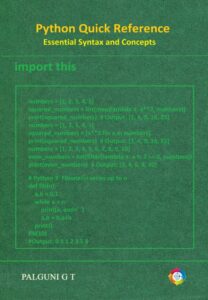Creating a qubit — the quantum equivalent of a bit — is one of the most fascinating challenges in modern science.
Unlike classical bits, qubits require quantum systems that can exist in superposition, exhibit entanglement, and be precisely controlled.
There is no single universal method for creating qubits. Instead, multiple approaches and physical platforms have emerged, each using different materials, particles, and technologies.
These approaches can be broadly grouped into five major categories, with additional emerging technologies still in experimental stages.
1. Superconducting Qubits
Concept
Superconducting qubits are based on tiny electrical circuits made of superconducting materials that conduct electricity without resistance at extremely low temperatures.
These circuits behave like artificial atoms, with two distinct energy levels that represent the quantum states |0⟩ and |1⟩.
When cooled to near absolute zero (around 15 millikelvin), electrical current in the circuit can flow in quantum superposition — simultaneously clockwise and counterclockwise — forming a qubit.
How They’re Created
- Built using Josephson junctions, which are superconducting loops separated by an insulating barrier.
- Microwave pulses are used to control transitions between the energy levels.
- Circuits are fabricated using conventional semiconductor microfabrication techniques.
Examples
- IBM, Google, and Rigetti build superconducting quantum processors.
- IBM’s Eagle and Condor processors use this approach.
- Google’s Sycamore achieved 53-qubit “quantum supremacy” in 2019.
Advantages
- Fast quantum gate speeds (nanoseconds).
- Integrates easily with existing chip fabrication methods.
- Mature and scalable for near-term devices.
Challenges
- Requires ultra-low cryogenic temperatures.
- Short coherence times (microseconds to milliseconds).
- Sensitive to electrical and magnetic noise.
2. Trapped Ion Qubits
Concept
Trapped ion qubits use charged atoms (ions) suspended in a vacuum and confined by electromagnetic fields.
Each ion represents a qubit using two of its internal energy states — for example, an electron in a low-energy ground state (|0⟩) or an excited state (|1⟩).
How They’re Created
- Ion traps (electromagnetic fields) hold ions in space using radiofrequency (RF) and static electric fields.
- Laser beams are used to:
- Initialize the ions in their ground state.
- Manipulate the energy levels to perform quantum gates.
- Read out the final quantum state using fluorescence detection.
Examples
- IonQ, Honeywell (Quantinuum), and Oxford Ionics lead this field.
- IonQ’s quantum computers use Ytterbium ions (Yb⁺).
Advantages
- Very long coherence times — ions remain stable for seconds or even minutes.
- High-fidelity quantum gates (very low error rates).
- Works at or near room temperature (requires only a vacuum chamber).
Challenges
- Gate operations are slower than in superconducting qubits.
- Scaling to thousands of qubits requires multiple traps and optical interconnects.
- Complex laser control systems are needed.
3. Photonic Qubits
Concept
Photonic qubits use particles of light (photons) to represent quantum information.
A photon’s polarization, path, phase, or time of arrival encodes the quantum states |0⟩ and |1⟩.
Photonic systems are excellent for quantum communication, networking, and certain types of computation.
How They’re Created
- Generated using lasers and nonlinear crystals that produce entangled photon pairs.
- Quantum information is encoded in polarization (horizontal/vertical) or path of the photon.
- Beam splitters, mirrors, and phase shifters are used to manipulate qubits.
Examples
- Xanadu (Strawberry Fields platform) and PsiQuantum focus on photonic qubits.
- Also used in Quantum Key Distribution (QKD) systems for secure communication.
Advantages
- Room-temperature operation (no cooling needed).
- Low decoherence – photons don’t easily interact with their environment.
- Ideal for long-distance quantum communication.
Challenges
- Hard to make photons interact (difficult two-qubit gates).
- Requires precise photon sources and detectors.
- Complex optical alignment limits scalability.
4. Spin Qubits
Concept
Spin qubits store information in the intrinsic angular momentum (spin) of particles — typically electrons or nuclei.
The spin can be “up” (|0⟩), “down” (|1⟩), or any quantum superposition of the two.
How They’re Created
- A single electron is trapped in a quantum dot (a tiny region of semiconductor material).
- The spin state is controlled using microwave or magnetic fields.
- Spins can also be hosted in donor atoms (like phosphorus) embedded in silicon.
Examples
- Intel and UNSW Sydney use spin qubits in silicon.
- Silicon Quantum Computing (SQC) develops phosphorus donor qubits.
Advantages
- Very long coherence times (milliseconds to seconds in isotopically pure silicon).
- Compatible with existing semiconductor manufacturing.
- Highly compact — can be integrated densely.
Challenges
- Fabrication requires atomic-level precision.
- Difficult to scale while maintaining uniform qubit behavior.
- Cross-talk between qubits increases with density.
5. Neutral Atom and Rydberg Qubits
Concept
Neutral atoms are un-charged atoms cooled to near absolute zero and trapped in position using optical tweezers — tightly focused laser beams.
Their quantum states are controlled using laser pulses.
When excited to Rydberg states, atoms exhibit strong interactions, allowing entanglement and quantum gates.
How They’re Created
- Use laser cooling and optical trapping techniques.
- Atoms (such as rubidium or cesium) are arranged in regular 2D or 3D arrays.
- Quantum operations are performed by exciting atoms to Rydberg states using laser light.
Examples
- Atom Computing, QuEra, and Pasqal are leading developers.
- TU Darmstadt demonstrated a 1,305-qubit Rydberg atom array in 2023.
Advantages
- Highly scalable – thousands of atoms can be trapped and addressed.
- Long coherence times and flexible geometry.
- Reconfigurable atomic arrays allow dynamic quantum simulations.
Challenges
- Requires ultra-cold temperatures and precise laser control.
- Readout fidelity and error correction still under development.
- Sensitive to optical alignment and intensity fluctuations.
6. Topological Qubits (Emerging Approach)
Concept
Topological qubits aim to encode quantum information in non-local properties of exotic quasiparticles called Majorana fermions.
Unlike other qubit types, topological qubits are inherently protected from local noise and decoherence, making them ideal for fault-tolerant computation.
How They’re Created
- Theoretically formed at the boundary of superconducting and semiconducting materials (e.g., nanowires).
- Majorana zero modes act as pairs of quasiparticles that share a single quantum state spread across space.
Examples
- Microsoft and research groups at Delft University are working on this approach.
Advantages
- Potential for intrinsic error resistance.
- Could reduce the need for complex error correction codes.
Challenges
- Still theoretical and experimental — Majorana fermions have not been conclusively proven.
- Very challenging to create and control experimentally.
7. Other Experimental Approaches
In addition to the major methods above, several emerging and hybrid technologies are under exploration:
- NV Centers in Diamond: Use nitrogen-vacancy defects in diamond lattices as spin qubits — stable even at room temperature.
- Quantum Dots: Artificial atoms that trap single electrons in semiconductor materials.
- Hybrid Systems: Combine different qubit types (e.g., photons + superconducting qubits) for better communication and processing.
Comparison Summary
| Approach | Physical System | Main Developers | Key Strengths | Main Challenges |
|---|---|---|---|---|
| Superconducting | Superconducting circuits | IBM, Google, Rigetti | Fast, scalable, chip-based | Requires cryogenic cooling |
| Trapped Ion | Charged atomic ions | IonQ, Honeywell | Long coherence, high fidelity | Slow gates, complex optics |
| Photonic | Light particles (photons) | Xanadu, PsiQuantum | Room temperature, low noise | Hard two-qubit gates |
| Spin-based | Electron/nuclear spins | Intel, SQC | Semiconductor compatible | Atomic-scale fabrication |
| Neutral Atom / Rydberg | Laser-trapped cold atoms | Atom Computing, QuEra | Highly scalable arrays | Needs ultra-precise laser control |
| Topological | Majorana quasiparticles | Microsoft (research) | Intrinsic error protection | Still theoretical / unproven |
Conclusion
There is no single way to create a qubit — rather, there are multiple approaches, each built around a different physical principle of quantum mechanics.
Whether using superconducting circuits, trapped ions, photons, spins, or neutral atoms, all aim to achieve the same goal:
stable, controllable, and scalable qubits that maintain quantum coherence long enough to perform useful computations.
In the future, we are likely to see hybrid quantum architectures, combining several qubit technologies — for example, superconducting qubits for computation, photonic qubits for communication, and atomic qubits for memory.
Together, these innovations are steadily bringing us closer to the realization of practical, large-scale quantum computers.


